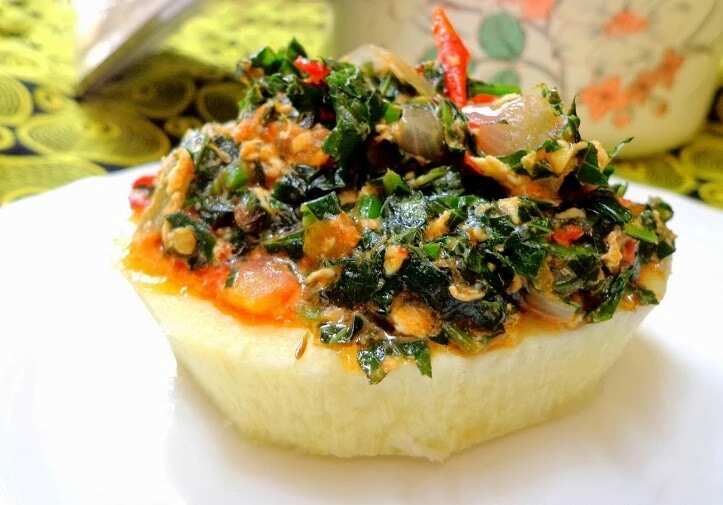How many calories are in a cup of garri
Calories in Nigerian food have become a popular concern lately when people started to think more about what they eat. Many traditional foods like garri, groundnuts, and so on appeared to contain plenty of calories and that’s exactly not what people may want for weight loss. Now, let’s find out how many calories garri provides to your body and how to consume it correctly.

Some basic garri nutrition facts
Garri is one of the basic traditional Nigerian foods that are common to practically all the regions of the country. Also known as eba, garri is one of the most popular and loved foods in Nigeria in particular and in Africa in general.

READ ALSO: Nigerian food menu for losing weight
The raw source for garri is cassava. It’s processed in a special way to produce the stuff that’s actually called eba. This is a kind of flour with bigger and smaller particles and a rough texture. Cassava roots are washed thoroughly after they are collected during the harvest time. Then, they are grated and all the water with starch is removed.

Read also
Discover delicacies of different parts of Nigeria
The remaining mass is dried through frying until there’s no more water in it, and sometimes they add some palm oil to the mass while drying.

From the point of view of nutrition, garri is a great food. It can be mixed with water and drank as an energy snack because the majority of its content is made of carbohydrates. It contains no fat (0.3g per 100g), no saturated fats or cholesterol. The amount of protein makes about 0.7g and of carbohydrates about 33.5g.
Instead, it has plenty of necessary vitamins and microelements like sodium (about 485.0 mg) and potassium (about 157.4 mg). You can find Vitamins B6, C and E in garri, quite a lot of copper (about 4.5%), iron (about 1.5%), magnesium and manganese (about 4% and 4.5% respectively), a little calcium, phosphorus, selenium, zinc, and other microelements.

That’s why if you are looking for a nourishing meal that will give you a lot of energy for hard physical labor, garri should be your first choice, no matter in which form. Yet, we still haven’t discovered how much calories are there in one cup of garri. Let’s figure it out.

Read also
Traditional Nigerian ugu sauce recipe
Calories in garri: how much do you consume with one portion?

To begin with, let’s determine what a calorie is. In physics, it’s a unit of heat that is given off during the process of burning of some substances. Our body receives food, digest it in many specific ways and in the process of digestion and metabolism, transforms these calories into heat. This is how our bodies receive the energy they need to function day after day.
However, each body requires only a specific amount of calories per day and everything that surpasses this amount is stored as fat. This is why eating too much or concentrating on foods that contain plenty of calories leads to obesity.

As a rule, garri or eba is served as an addition to a soup and meat, for example. Now we will speak about the number of calories that are found in one cup of garri, which is about one half of the amount a person eats with a serving unit of a random Nigerian soup. It means the figures should be doubled for a real picture.

Read also
Do's and don't's of consuming garri during pregnancy
100g of garri contains 357 calories, 1 cup of garri contains about 857 calories. This is how much you consume when you eat only one cup of garri, which is quite a little, in fact.

Add to it the calories from a Nigerian soup (something between 450 and 720 calories in average) and, for instance, some chicken meat (about, maybe, 300-350 calories, depending on the size and cooking method). Quite a lot for one sitting, isn’t it?
Nevertheless, all this doesn’t mean that you should not eat garri at all. Below, you will find some guidance on eating Nigerian and staying in a good body shape.
Garri and weight loss: mission possible?
Most weight-loss plans mean reduction of carbohydrates and the energy they bring to the body. This is why the purely carbohydrate garri is rather out of place in a weight-loss routine. Still, you should not exclude it from your meals just because of its value.

Read also
Stay healthy, eat low carbs: best Nigerian low-carb foods
Even athletes who have perfect bodies often have so-called cheat-days when they can eat food that’s rich in carbohydrates just to have some pleasure and boost their metabolism. You can do the same. Even if you are no athlete, you can have garri or other Nigerian foods once a week.
It means if you are going to eat garri with a Nigerian soup and dive into the sea of tasteful pleasure, may that be really only one cup of garri and a little soup. You will eat twice as little calories but have the same delight.
If you are into doing hard physical work, you should never refuse garri because it gives energy and feeds your muscles. Without carbs, you will not be able to do any physical work, no matter whether it’s some labor or sports.
Health benefits of garri

After all, in spite of the calorie richness, garri has a range of health benefits. The main one of them is the result of fermentation. This process makes it rich in Vitamin C and makes it easier for our bodies to consume this vitamin properly.

Read also
Stay healthy with astonishing abilities of cocoyam leaves
In addition to this, the fermentation process adds some probiotic bacteria to the product. The specific and easily recognizable sour taste of eba shows that it has plenty of useful acid bacteria and components to give to our bodies.

In fact, if we take garri and compare its calorie content with that of wheat flour, white rice or other products that also contain plenty of carbohydrates, we will see that garri doesn’t have the highest calorie rank.
- 1 cup of semovita contains 600 calories
- 1 cup of Tuwo Masara contains 450 calories
- 1 cup of pounded yam contains 400 calories
- 1 cup of Amala contains 360 calories
There should simply be a measure in everything and eating garri while trying to lose weight is not a nuisance. A cup of this delicious product once a week can do you no harm, indeed.
READ ALSO: How to prepare egusi soup with lumps

Read also
Making Lemongrass Oil at Home Has Never Been Easier
Source: Legit.ng
ncG1vNJzZmivp6x7rbHGoqtnppdkfnKClG5sbWWYpMRur8Clpquhlah6onnCrqdmn5Gnv6p6x62kpQ%3D%3D